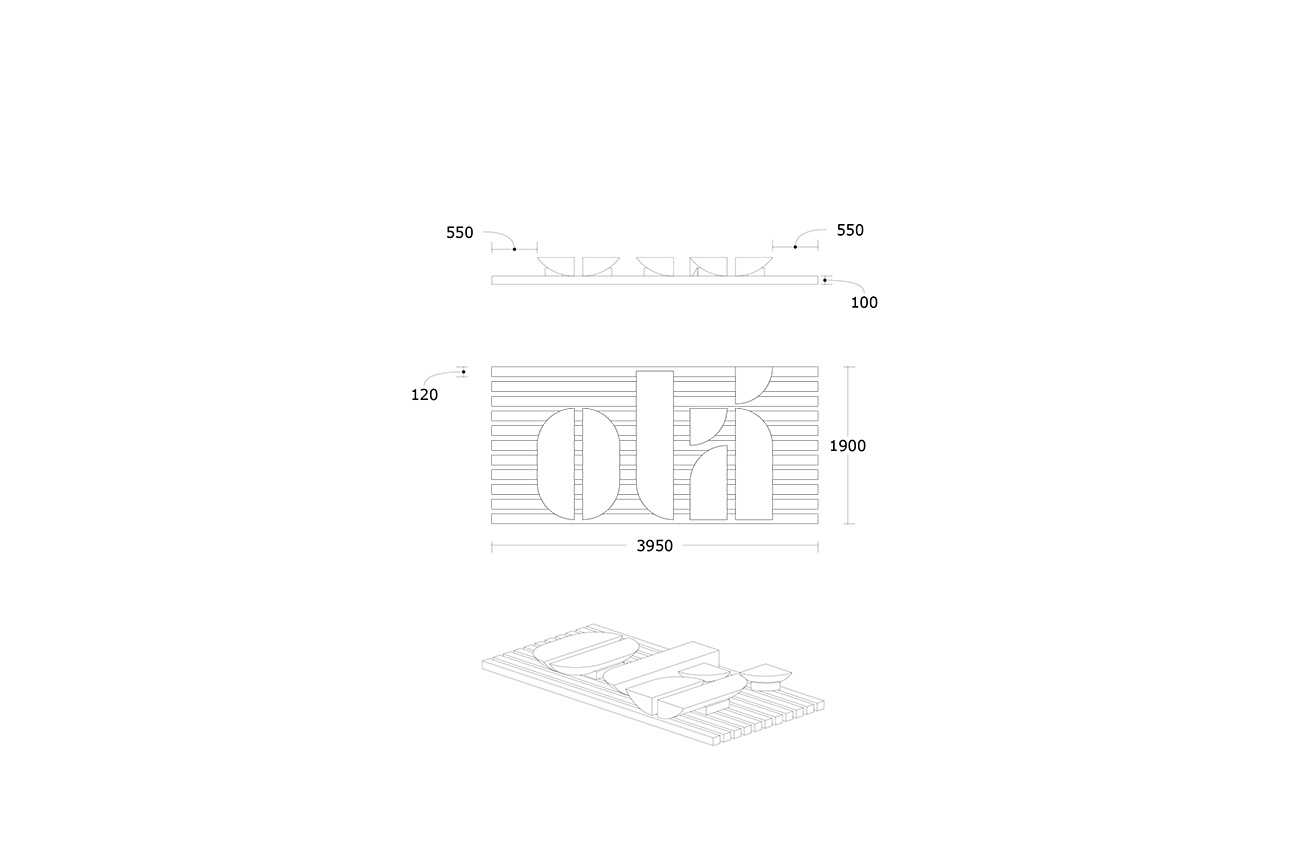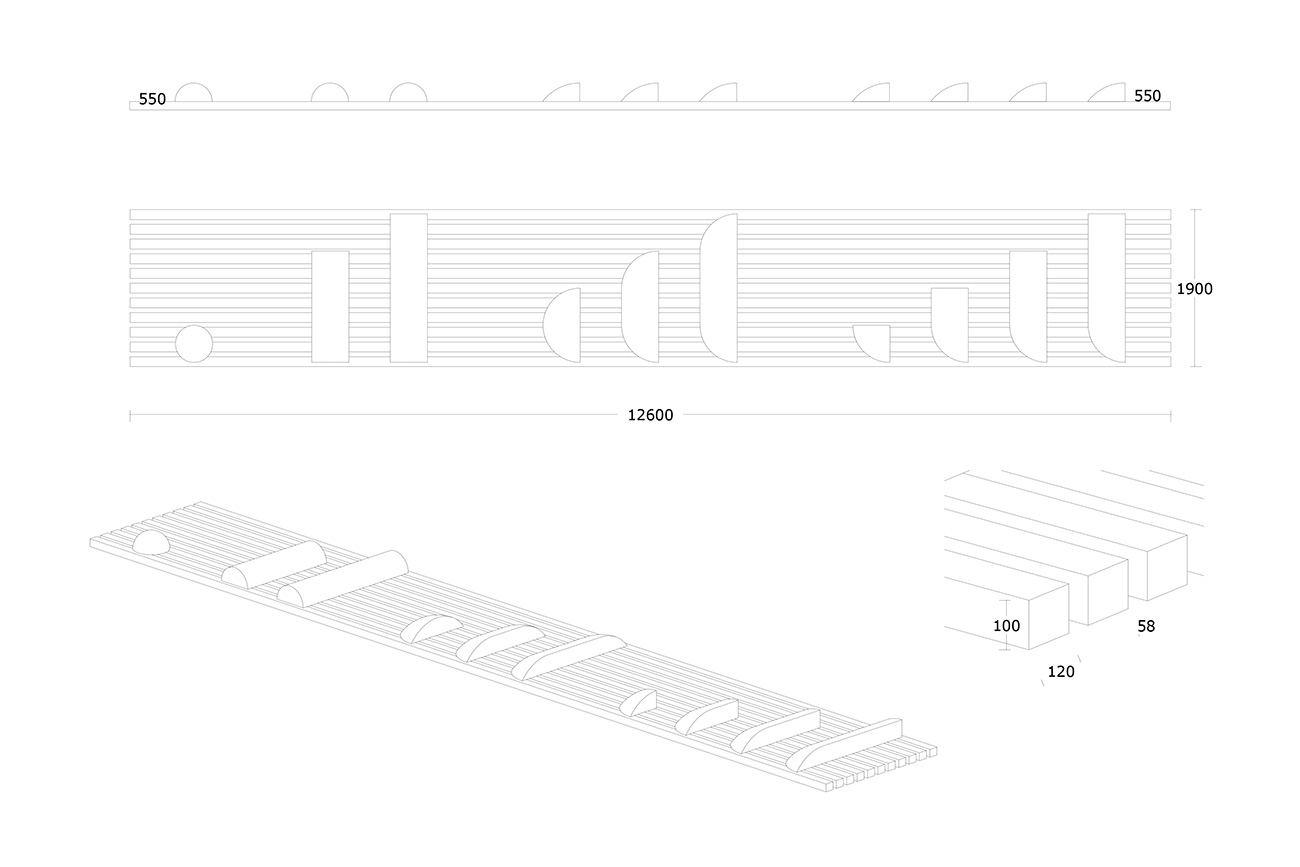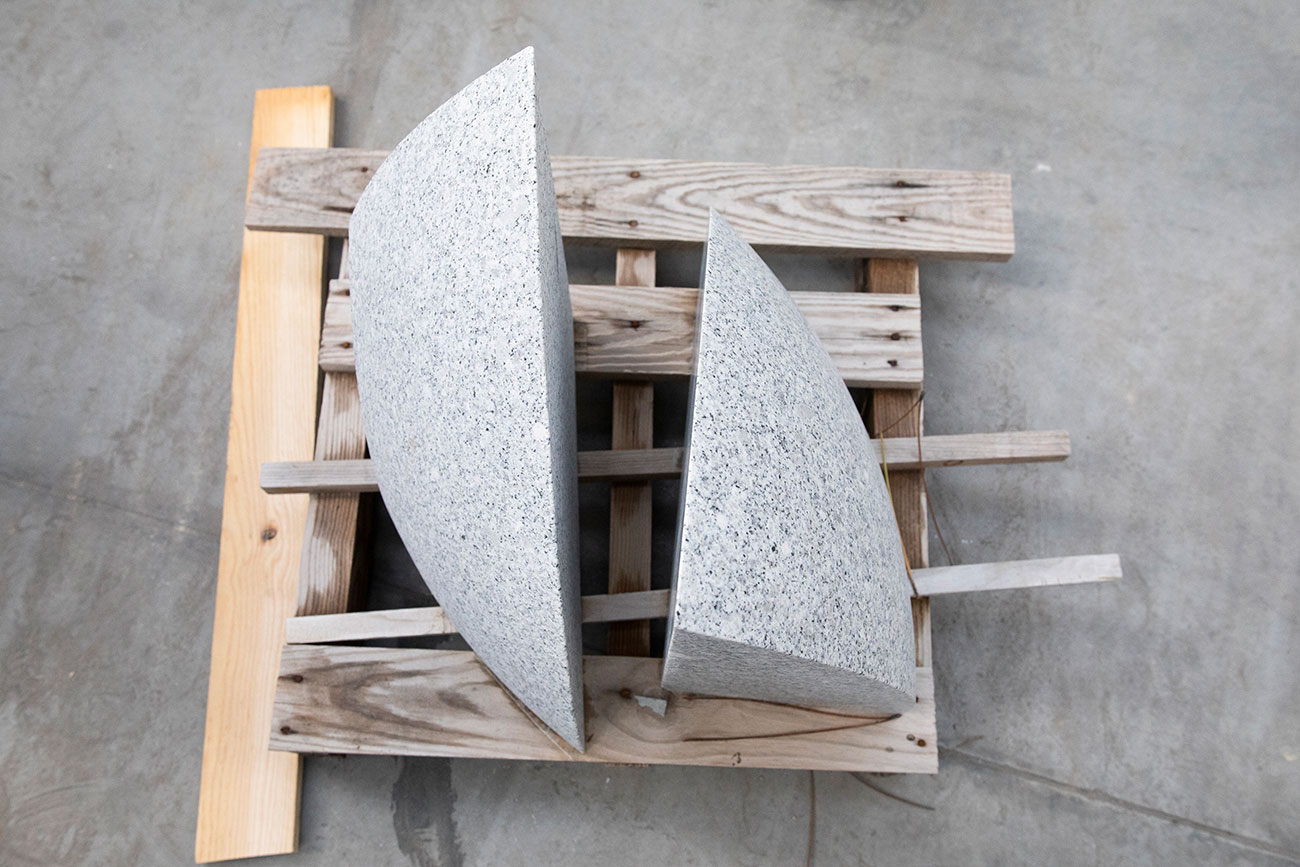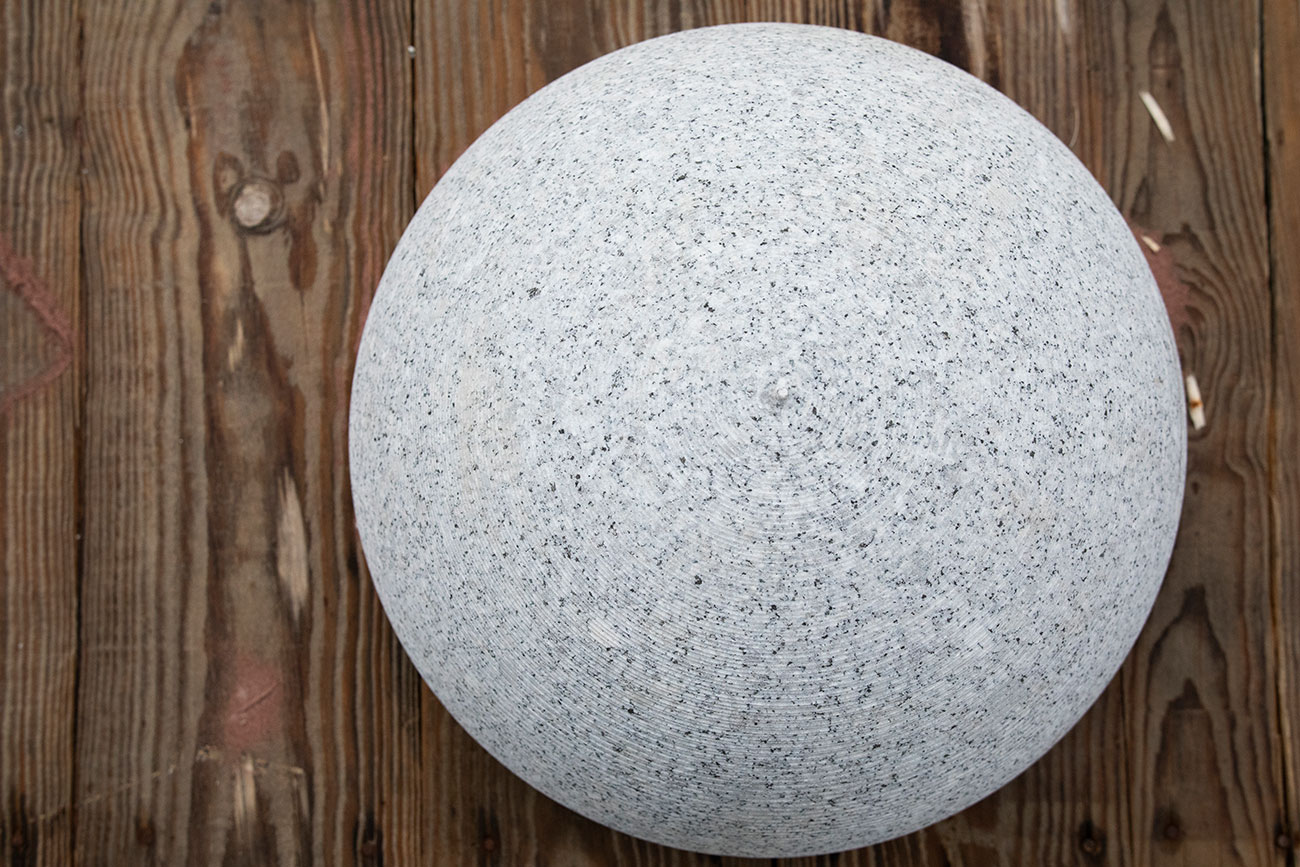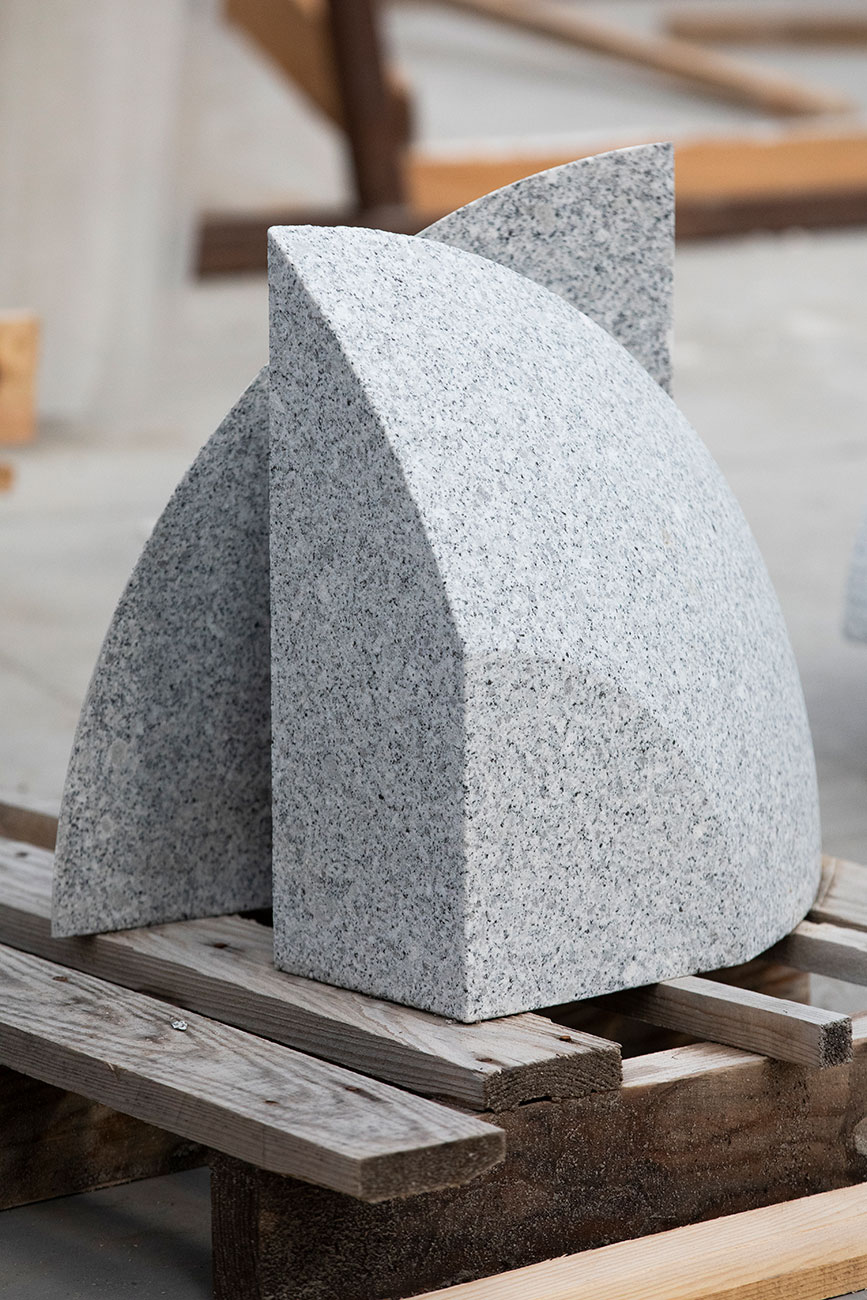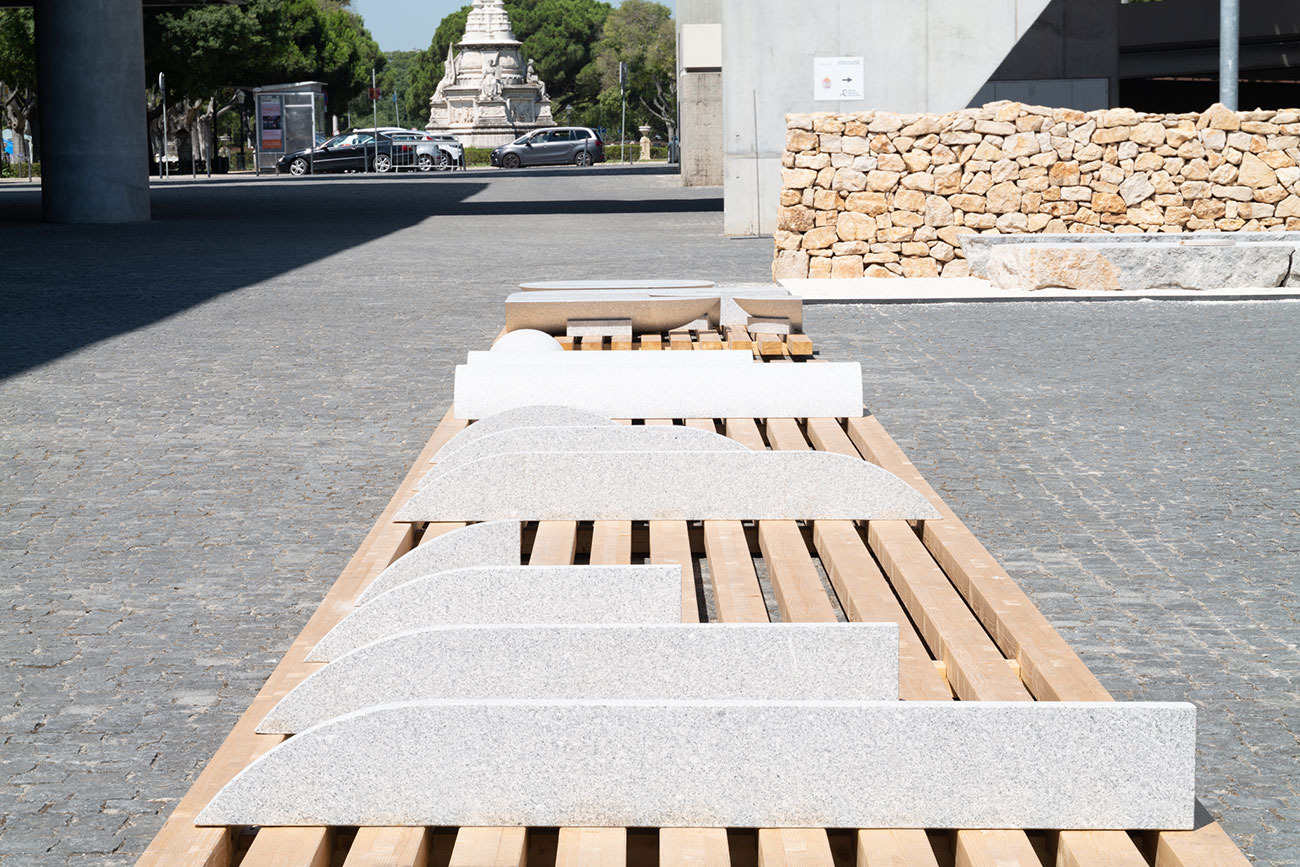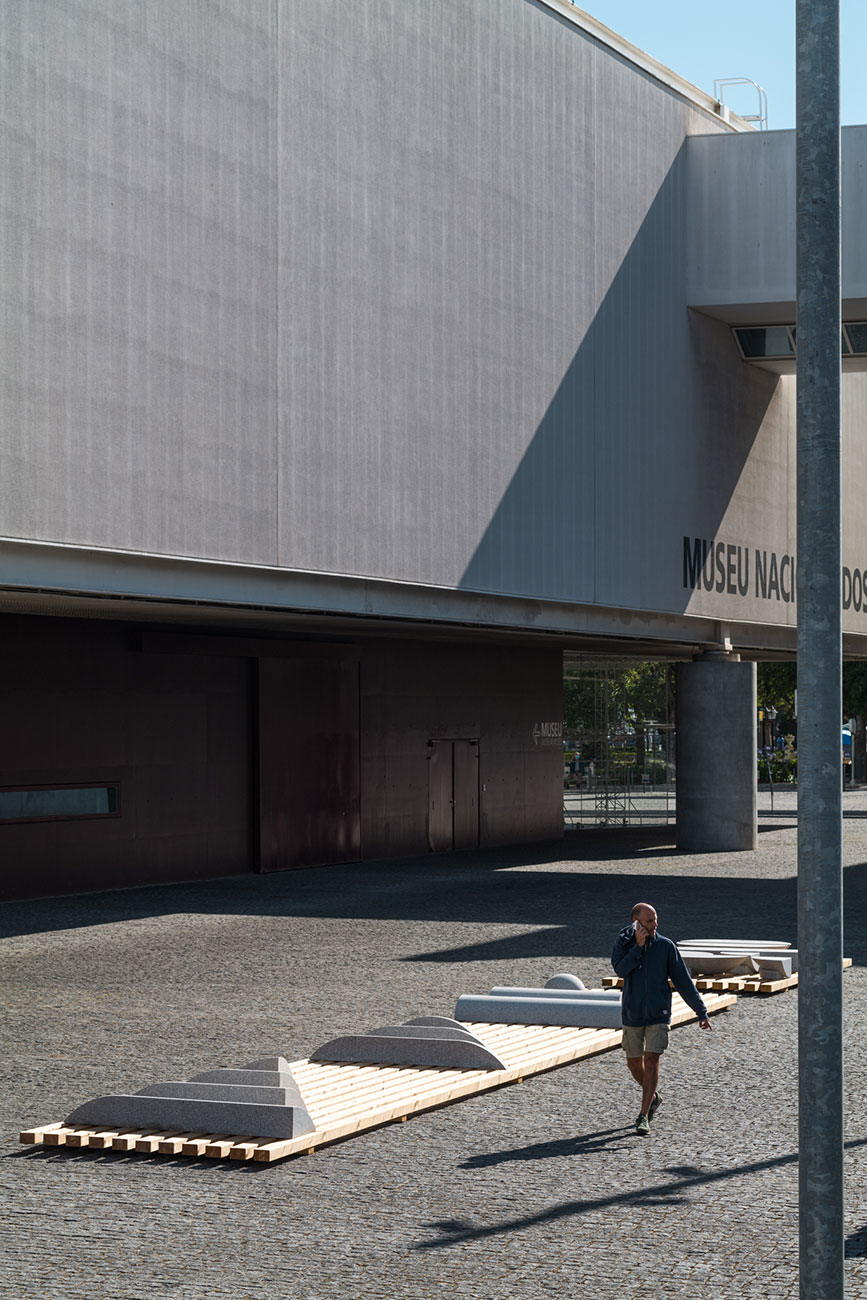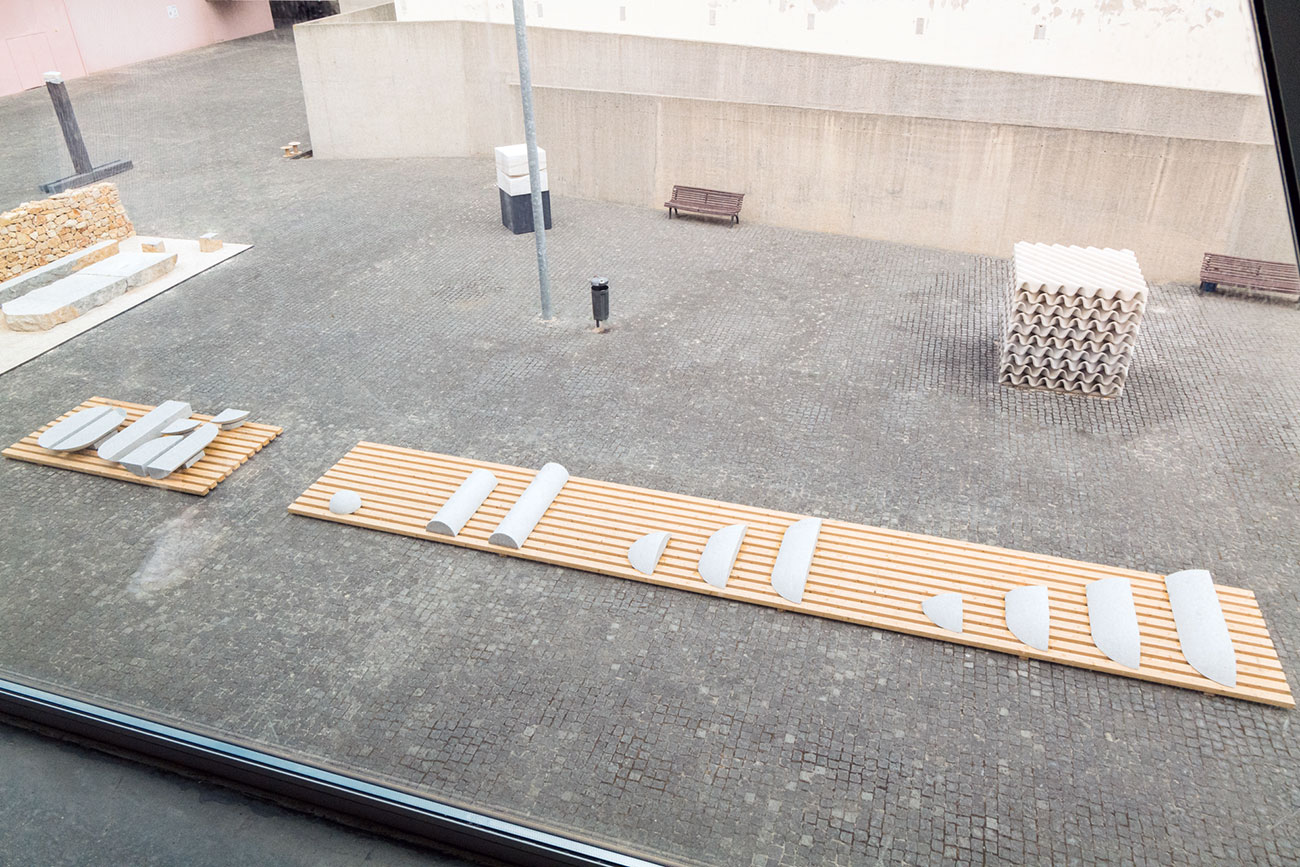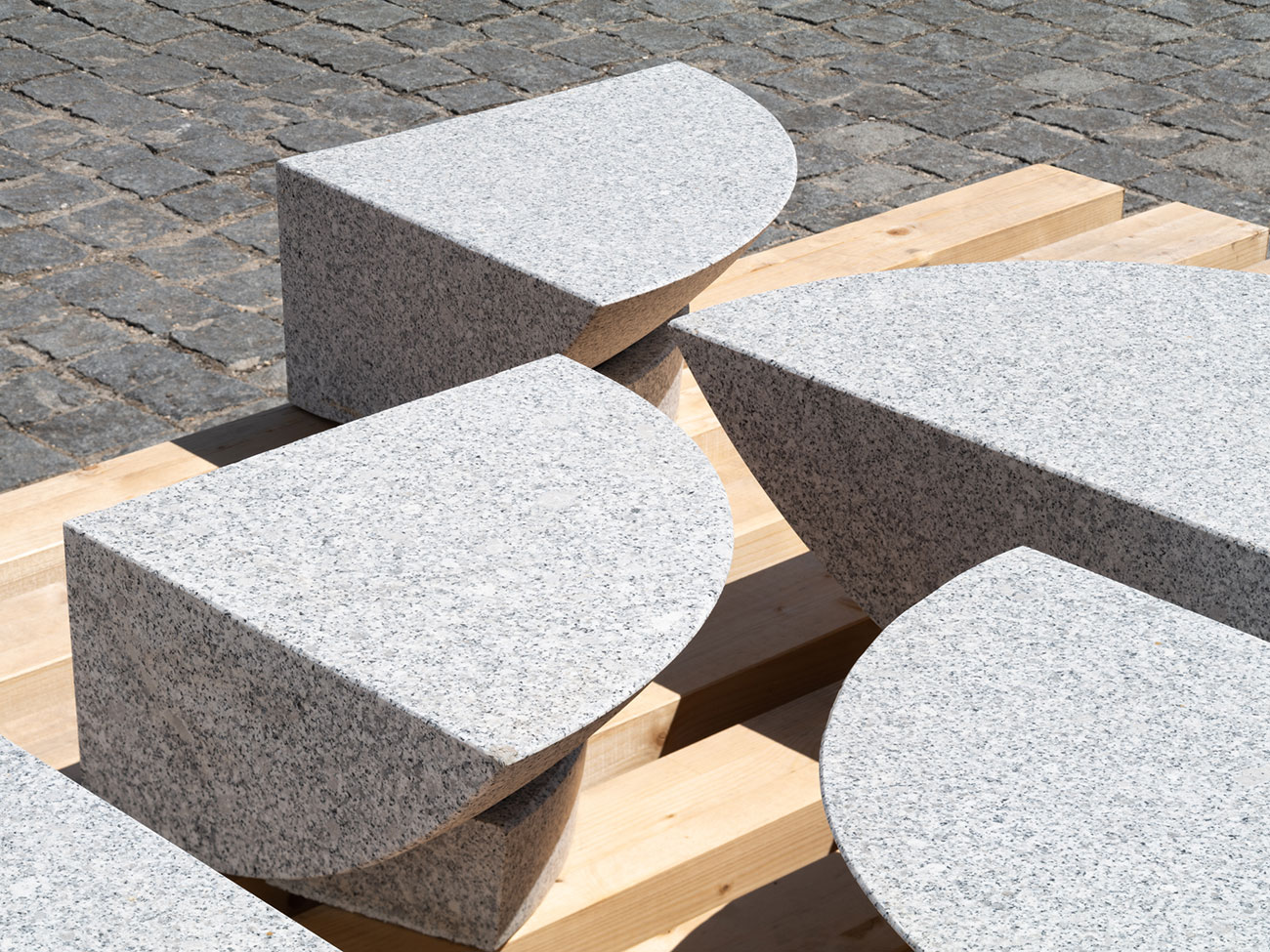
After Josef Albers
Fernanda Fragateiro
Josef Albers created a stencilled typographic alphabet in 1923 at the Bauhaus – a system in which letters could be composed in a variety of shapes, using only a limited number of geometric pieces. The letters are composed from variations of units, a combination of circles, half circles, quarter circles and squares, to which rectangular pieces are added.
Based on this system, Alfabeto (After Josef Albers) is constructed as a floor sculpture composed of the ten standard units created by Albers, which can be combined in different ways to compose text. The set Olá (After Josef Albers) exemplifies how to use these elements in order to create meaning.
The material used is Pedras Salgadas granite, a medium-grained light grey Portuguese stone that forms part of an elongated patch of calc-alkaline granite that extends from Vidago to the south of Vila Pouca de Aguiar, in Trás-os-Montes. The stone was chosen for its beauty, strength and colour.
